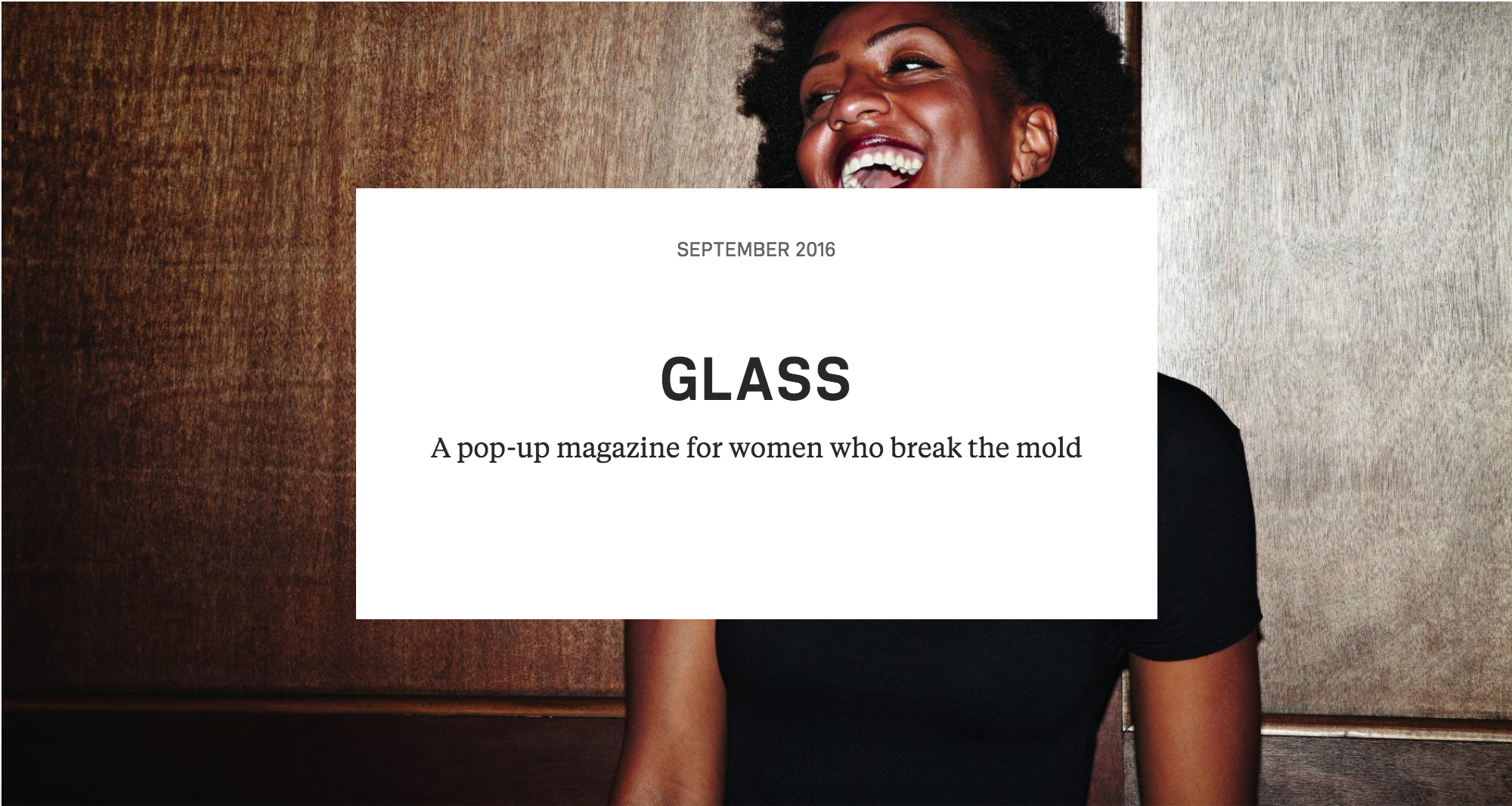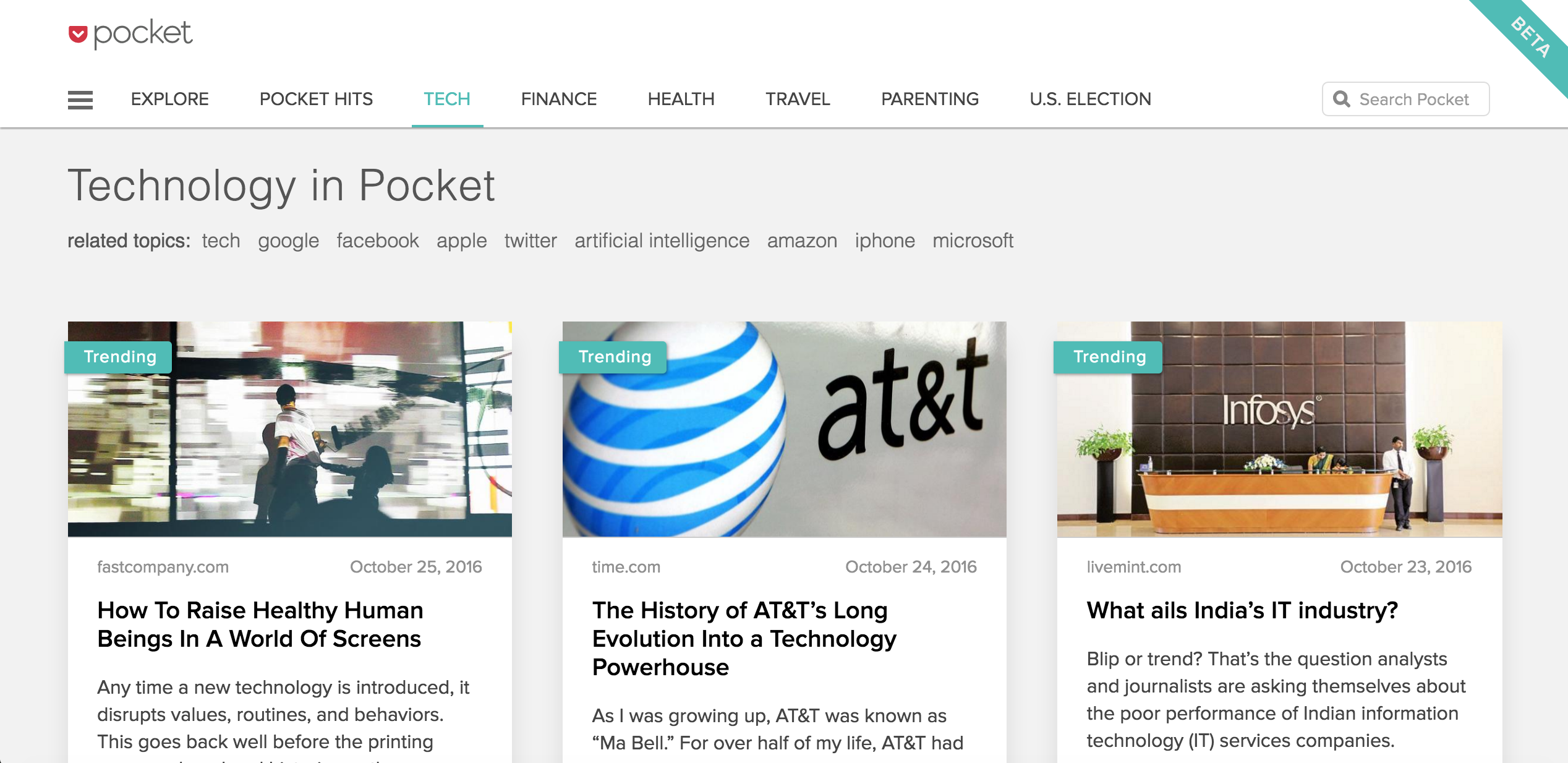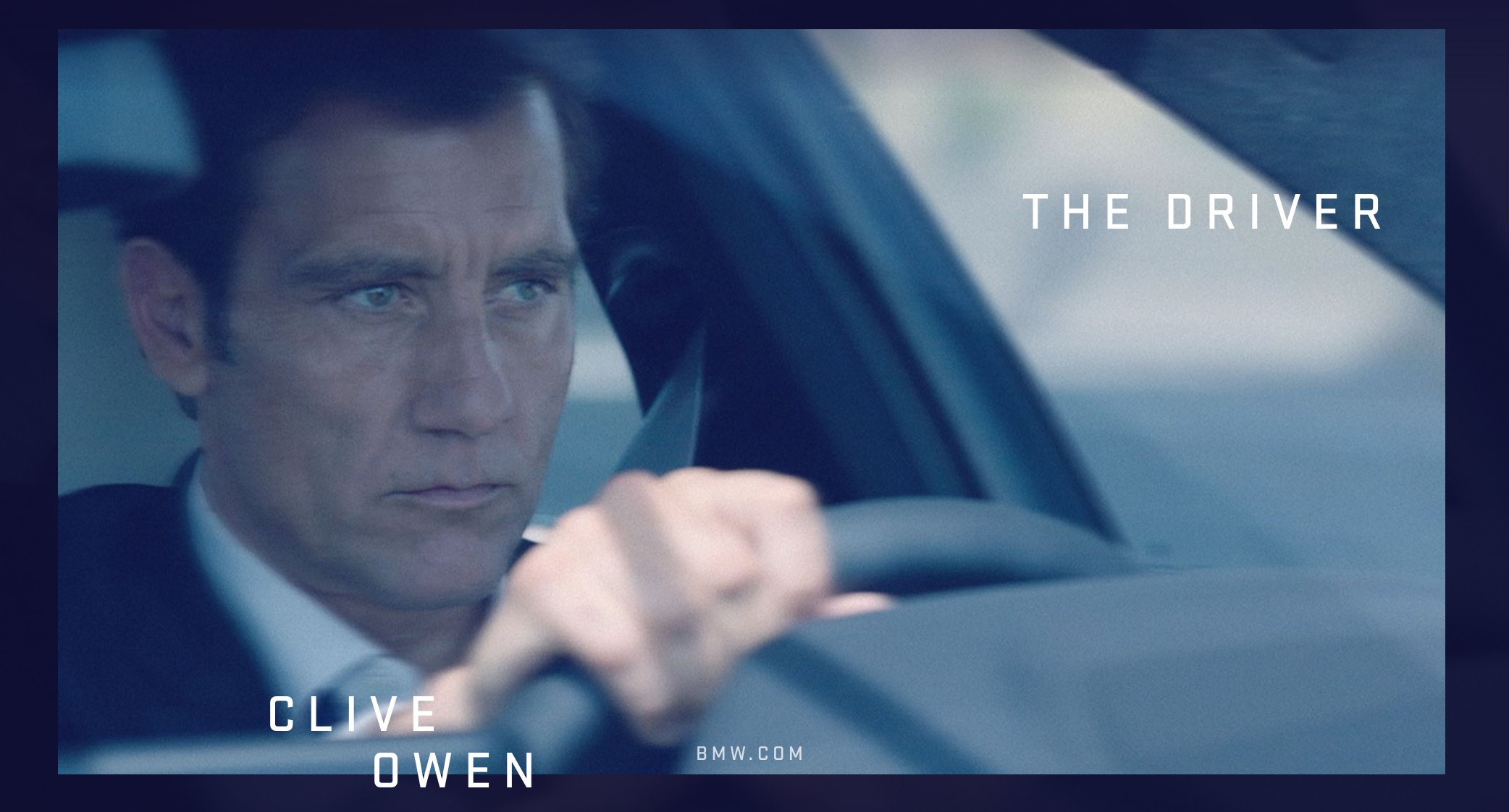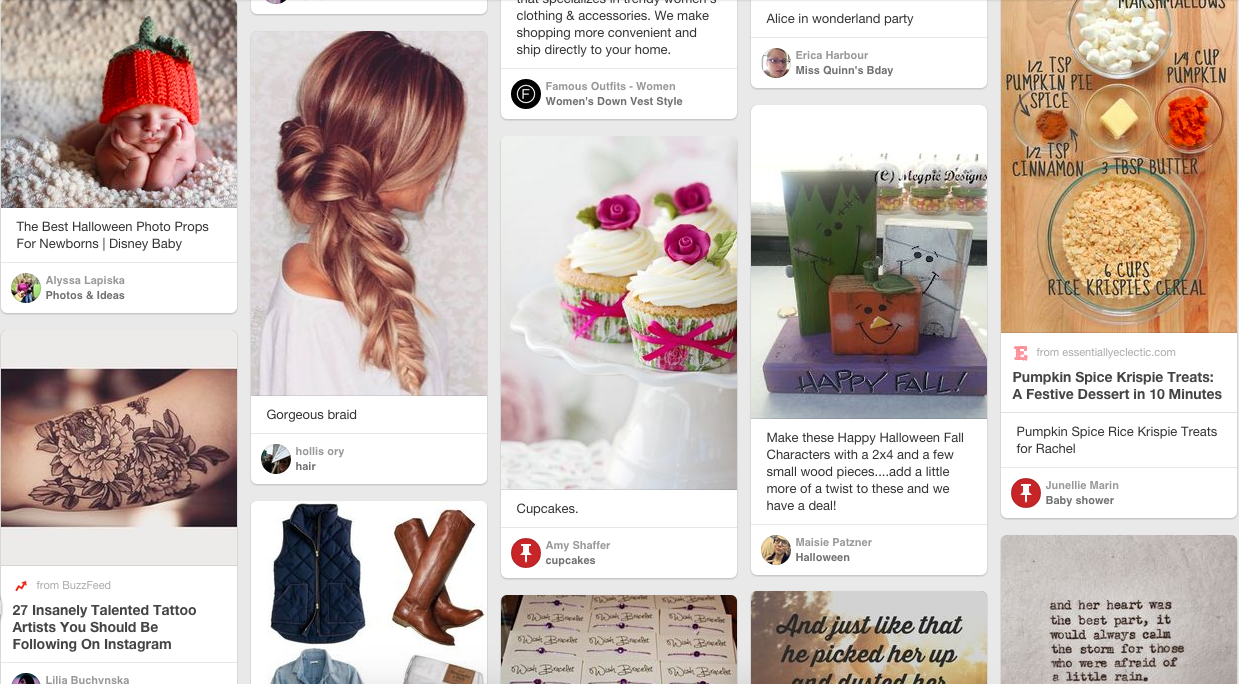It’s Time to Stop Blaming Content for Your Content Marketing Problems (LinkedIn Marketing Solutions EMEA Blog) A few weeks ago, Beckon, a marketing data platform, released a study that found that only 5% of content marketing is effective – which received a lot of industry pick-up, with some headlines questioning the value of content marketing. Adweek profiled their 2016 brand geniuses, and each piece is a worthy read for content marketing inspiration. Huge is also getting into the publishing game, with the launch of its own digital magazine in early October. Since launching push notifications in September, the Washington Post got around 200,000 signups and sent out about 20 notifications, which received approximately a 33% click-through rate. The service allows users to save articles (usually long-form) to read later. This means that Pocket has a trove of valuable data: It knows what articles people save around what topics, how much of each article they’ve read, and how engaged they’ve been. Now, IBM is poising Watson to be the next big name in marketing. It’s the technological entity behind IBM’s new THINK Marketing hub, which is updated with nine pieces of thought leadership content every day. Take a look at this infographic to learn our findings about the most successful distribution tactics. Pinterest is building a new media channel for publishers and brands to create videos and multimedia posts, according to advertisers familiar with the plans.
NewsCred’s roundup of the content marketing, technology, and business stories that caught our eye this week.
A few weeks ago, Beckon, a marketing data platform, released a study that found that only 5% of content marketing is effective – which received a lot of industry pick-up, with some headlines questioning the value of content marketing.
Jason Miller, LinkedIn’s Global Content Marketing Leader, reacted to the study the same way we did: That those findings are “blindingly obvious.” Content marketing works – but only when done well. Beckon’s study should spur leaders evaluate their own content marketing and figure out how to make it effective, rather than seeing the data point as proof that content marketing doesn’t work, according to Miller who makes his case in this blog post.
Adweek profiled their 2016 brand geniuses, and each piece is a worthy read for content marketing inspiration. Shinola’s CMO, Bridget Russo, for example, partnered with Harper’s Bazaar, Viceland, and actor Luke Wilson to create videos that showcase how Shinola manufactures its goods in Detroit, creating jobs and helping the local economy. Clinique’s Global Brand Chief, Jane Lauder, launched a digital lifestyle magazine, The Wink, to appeal to millennial women. Other brand geniuses include JetBlue’s Elizabeth Windram, Intel’s Steve Fund, and TD Ameritrade’s Denise Karkos.

Why You May Soon Be Seeing More Agencies Launching Their Own Print Magazines (Adweek)
Agencies are creating high-quality print magazines to market to customers and prospects. In September, J. Walter Thompson launched Glass, a magazine filled with stories generated from the agency’s proprietary research on millennial and Gen Z women. The idea is for the content to inspire brands to create effective marketing campaigns, ideally with the agency.
Huge is also getting into the publishing game, with the launch of its own digital magazine in early October. And R/GA is relaunching FutureVision, its four-year-old print and digital magazine, in early November.
On the Hunt for Direct Audience Connections, Publishers Turn to Desktop Push Notifications (Digiday)
In an effort to build stronger connections with users and gain better distribution control (i.e. squelching their dependency on Facebook and other social platforms), brands are asking users to opt in to desktop push notifications. The Washington Post, Vice, Mic, LittleThings, and the New York Times have all been experimenting with them. Since launching push notifications in September, the Washington Post got around 200,000 signups and sent out about 20 notifications, which received approximately a 33% click-through rate.
Publishers are still trying to find the right balance for sending out alerts – too many notifications will aggravate users. And some people may want breaking news, while others may want to be informed about interesting long-form articles. This is why some brands, like the Guardian, are turning to personalization so users can customize their notifications.

As content marketers, we’re well aware of how noisy the internet is – and how difficult it can be to reach our target audience.
Pocket is the latest entity that’s trying to surface quality content. The service allows users to save articles (usually long-form) to read later. This means that Pocket has a trove of valuable data: It knows what articles people save around what topics, how much of each article they’ve read, and how engaged they’ve been. Pocket is using this information to offer users recommendations around broad topics like technology, finance, health, and travel, as well as the opportunity to search around more niche topics.
In addition, Pocket has started experimenting with sponsored posts – so brands have another way to surface their content. (Though the ideal way would be through the organic recommendations!)

How Watson is Powering IBM’s Content Marketing
You might know IBM’s Watson from its famous victory on Jeopardy!, or for revolutionizing data analysis with its ability to crunch millions of pieces at once.
Now, IBM is poising Watson to be the next big name in marketing.
It’s the technological entity behind IBM’s new THINK Marketing hub, which is updated with nine pieces of thought leadership content every day.
The website is part of a long-term strategy for IBM to position itself as a marketing technology leader, and expand its reach into new client territories beyond the Fortune 500s.
“THINK Marketing is a place where marketers can come to not only get some thought capital from IBM around what’s happening in the marketing world, but it also brings in third party experts,” says IBM’s Chief Digital Officer Bob Lord explains. “So there’s really one place where marketers can go to research any topic around marketing.”

INFOGRAPHIC: How to Maximize Content Marketing Distribution
Through analyzing data from our own marketing efforts, we found that employing a multi-touch strategy of public relations, social media, and email marketing almost always wins. By distributing your content across different channels, you meet your target audience where they are and extend your reach far beyond simply publishing a piece of content to your owned blog.
Take a look at this infographic to learn our findings about the most successful distribution tactics.

The original BMW Films series, called “The Hire,” included eight short films released over two seasons in 2001 and 2002. It is considered an advertising icon, winning the Cannes Lions International Festival of Creativity’s first ever Titanium Lion. It drew more than 100 million views at BMWFilms.com, which was considered a major achievement in pre-YouTube days.
Now, 14 years later, BMW Films is back, with some original creators onboard, as well as Clive Owen, who starred in the original.
But can BMW replicate its success in today’s crowded space?

Pinterest is building a new media channel for publishers and brands to create videos and multimedia posts, according to advertisers familiar with the plans.
The Pinterest media section is similar in concept to how publishers work closely with Snapchat, Twitter, Facebook, and Instagram, the advertising sources said speaking on condition of anonymity. The design and content would be uniquely Pinterest but it gives publishers and brands a more structured playground to share to the site.
Heather Eng is NewsCred’s Managing Editor.
COMMENTS